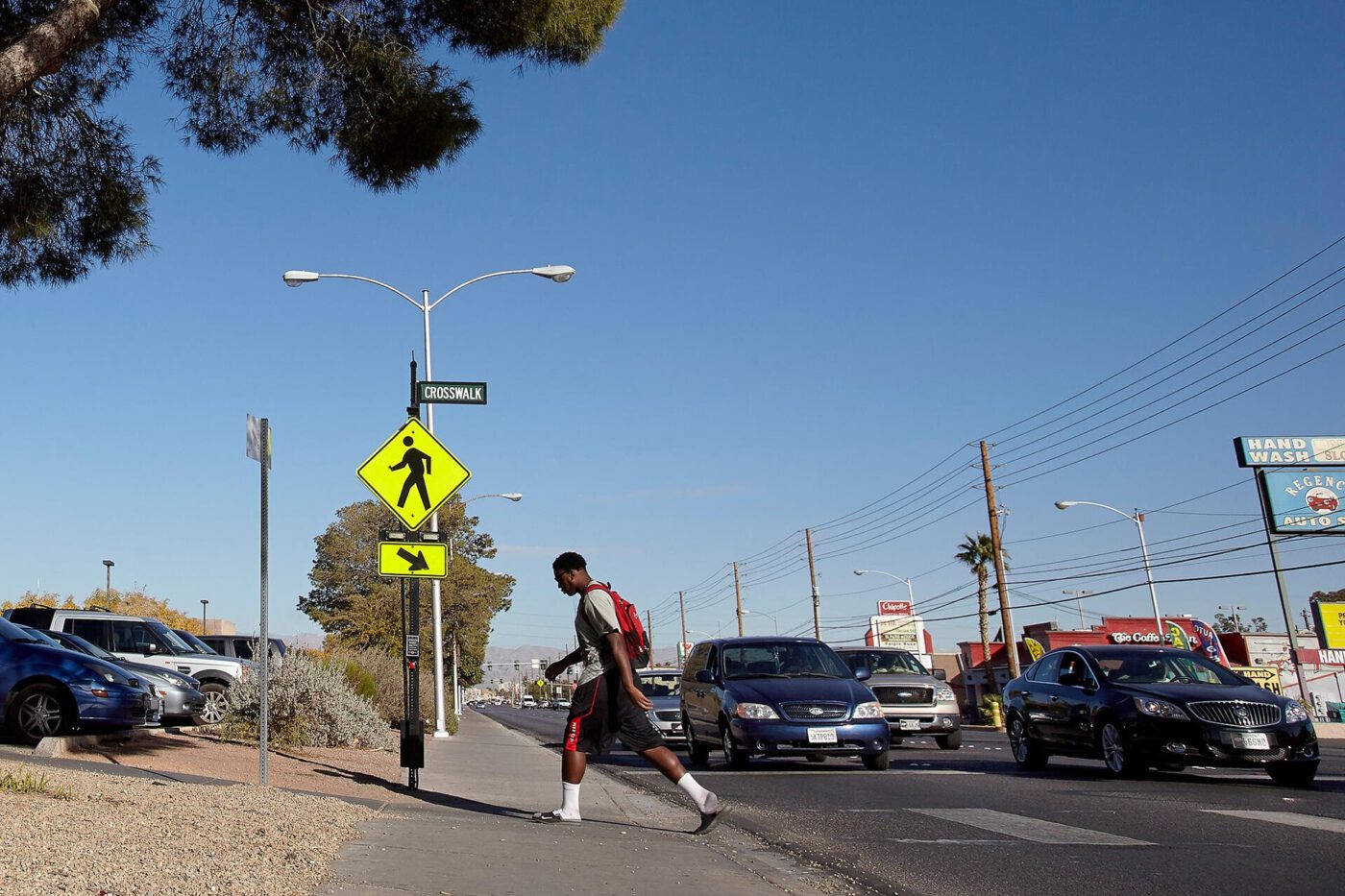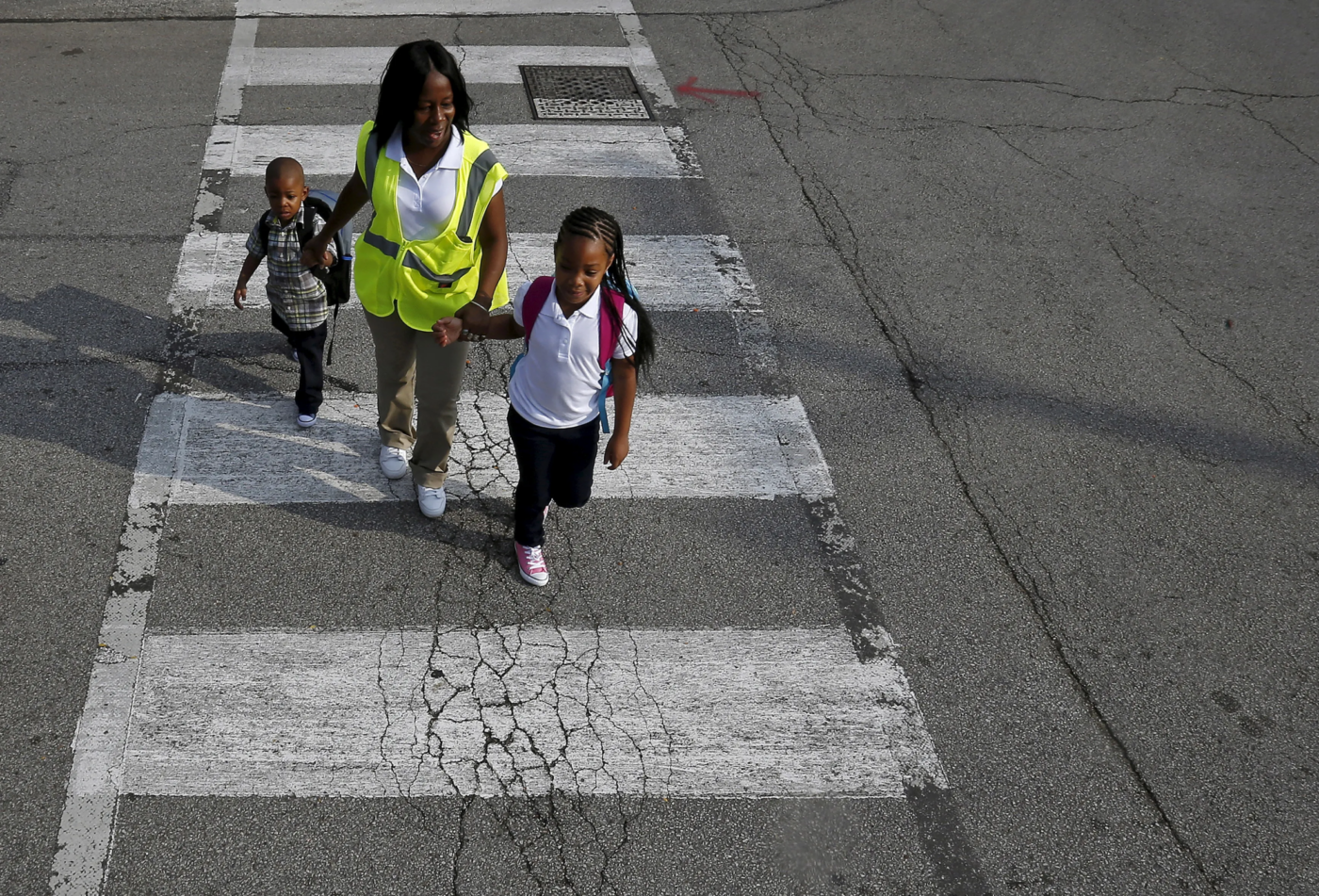
by Kahfre Jay
In the United States, a country plagued by the enduring legacy of white supremacy, the simple act of walking as a Black individual is fraught with disproportionate danger. Seriously. Just walking in public while Black is more dangerous for us. This nation, built on the backs of enslaved Africans, continues to perpetuate racial disparities, starkly evident in the experiences of Black, Native American and Hispanic pedestrians when compared to their white counterparts. The blatant disregard for Black lives manifests in various facets of daily life, including the perilous realities faced by Black pedestrians.
The reasons for these disparities are as complex as they are infuriating. Poorer neighborhoods, often predominantly inhabited by minorities due to systemic economic injustices, lack adequate pedestrian infrastructure. This neglect is a direct reflection of a white supremacist system that prioritizes wealth and whiteness over the safety and well-being of marginalized communities.
Moreover, there’s a chilling behavioral aspect at play – studies reveal that drivers’ likelihood of stopping for pedestrians is influenced by the race of the pedestrian, with Black individuals receiving less consideration. This behavior is a microcosm of the broader societal biases that dehumanize Black people, making our mere presence on the streets a riskier endeavor.
This stark reality is a consequence of a historical trajectory marred by racism and inequality. From the era of chattel slavery to the Jim Crow laws, from redlining to the War on Drugs, every American institution has been complicit in perpetuating racial disparities. The dangers faced by Black pedestrians are a direct outcome of this systemic racism – a facet of the broader devaluation of Black lives.
Statistical evidence of disparities in pedestrian safety
According to a study by Smart Growth America, as cited by Governing.com, the disparities are stark and troubling. Black people, who make up 12.2 percent of the U.S. population, accounted for 19.3 percent of all pedestrian deaths in the decade ending in 2014. This overrepresentation in pedestrian fatalities is a clear indicator of the unequal risks faced by Black individuals in everyday activities like walking.

The situation is even more dire for Native Americans. Despite being a smaller percentage of the population, they have a pedestrian fatality rate that is 4.5 times higher than that of whites. This staggering statistic is a testament to the neglect of Native American communities in terms of road safety and infrastructure.
Hispanic populations also face higher risks. They comprise 16.9 percent of the population but account for 21.5 percent of pedestrian deaths. The data reveals that in at least 42 states and the District of Columbia, the fatality rates of non-white pedestrians exceeded their share of the population. This is not just a matter of coincidence but a reflection of systemic issues like poor infrastructure in minority-dominated neighborhoods and racial bias in driver behavior.
Bias in driver behavior at crosswalks
Recent studies have focused on racial bias in driver behavior at crosswalks, revealing how deeply ingrained prejudices can influence even the most mundane aspects of daily life. These studies, conducted in cities like Portland, Oregon, and Las Vegas, Nevada, provide empirical evidence of drivers’ differential treatment of pedestrians based on race.
In Portland, a study by researchers at Portland State University explored racial bias at crosswalks. This groundbreaking research, titled “Walking While Black: Racial Bias at the Crosswalk,” conducted by Kimberly Barsamian Kahn, found significant disparities in how drivers yielded to Black and white pedestrians. The study observed that Black pedestrians experienced delays in drivers yielding to them, indicating an implicit racial bias in driver behavior.
This research is crucial evidence demonstrating how societal biases permeate even the most routine interactions, such as crossing the street. You can delve deeper into this study and its findings on the Portland State University’s digital repository.
Similarly, a study conducted by the University of Nevada-Las Vegas replicated these findings in a different urban setting. The UNLV study confirmed that motorists are less likely to stop for pedestrians of color, particularly in higher-income neighborhoods. This study observed driver behavior toward Black and white pedestrians at crosswalks in high-income and low-income communities.
The results were alarming, showing a marked bias against Black pedestrians, particularly in areas with higher speed limits and more lanes of traffic. This research is crucial in understanding the intersection of race, socioeconomic status, and pedestrian safety. If you would like more detailed information on the methodology and results of the UNLV study, you can visit the University of Nevada, Las Vegas’s news article.
These studies collectively point to a troubling reality: Racial biases are deeply embedded in everyday behaviors, including driving. Such biases are not only a matter of personal prejudice but also reflect broader systemic issues that contribute to racial disparities in safety and mobility. Recognizing and addressing these biases is essential for a more equitable and just society.
Case study analysis: Jacksonville, Florida
Pedestrian issues for people of color also go beyond the risk of being hit by vehicles. The situation in Jacksonville, Florida, serves as a microcosm of the broader issue of racial disparities in pedestrian safety and law enforcement practices. A detailed analysis by ProPublica of pedestrian tickets and crashes in Duval County, Florida, reveals a deeply troubling pattern of racial discrimination in the enforcement of pedestrian violations.
ProPublica’s investigation found that in Jacksonville, pedestrian tickets were disproportionately issued to Black individuals. This disparity was not minor but marked, indicating a systemic bias in enforcing pedestrian laws. More than half of the pedestrian tickets issued over five years went to Black individuals, who make up just 29 percent of the city’s population.
The study further examined the correlation between the locations of pedestrian tickets and fatal crashes involving pedestrians. Surprisingly, or perhaps tellingly, there was only a weak to moderate relationship. This finding suggests that enforcing pedestrian laws was not primarily focused on the areas where pedestrian safety was most at risk.
Furthermore, ProPublica’s investigation highlighted specific statutes used in issuing tickets. A significant number of these tickets were found to be issued erroneously. For instance, tickets for crossing the street outside a crosswalk were frequently given in locations without crosswalks or where the laws did not apply, as cited.
This case study clearly indicates the racial biases inherent in law enforcement practices. The disproportionate targeting of Black pedestrians in Jacksonville for minor infractions speaks to the broader issue of systemic racism within the criminal justice system nationwide. It reflects a disturbing trend where Black individuals are subjected to increased surveillance and punishment, a reality that is emblematic of the more significant societal issue of racial inequality.
Impact of socioeconomic factors and urban design on pedestrian safety
The quality of urban infrastructure and its correlation with socioeconomic status plays a crucial role in pedestrian safety, particularly in neighborhoods predominantly inhabited by minority populations. Research and insights, such as those from Governing.com, highlight how urban design and infrastructure investment disparities significantly impact pedestrian risks.
Poorer neighborhoods, which often have higher minority populations due to systemic economic injustices, tend to suffer from lower-quality infrastructure. This includes inadequate sidewalks, poor street lighting, and a lack of safe pedestrian crossings. These deficiencies make walking more hazardous and reflect a broader narrative of neglect and underinvestment in these communities.
Governing.com’s research points to a direct link between the quality of pedestrian infrastructure and the rate of pedestrian deaths. The study suggests that pedestrian deaths are disproportionately higher in low-income neighborhoods, which tend to have more minorities. This is partly because these areas often lack the essential infrastructure that makes walking safe, reflecting a broader trend of systemic inequality and neglect.
Moreover, the design of urban environments in these neighborhoods typically needs to prioritize pedestrian safety. Roads in such areas might be wider, with higher speed limits and with inadequate pedestrian crossings, making it more dangerous for people to walk. This urban design approach prioritizes vehicular traffic over pedestrian safety, disproportionately affecting those in lower-income and minority neighborhoods.
Additionally, the socioeconomic status of these areas often means less political clout or advocacy power to demand improvements, perpetuating a cycle of neglect. This systemic issue is a reflection of broader socioeconomic disparities and racial inequalities, where the most vulnerable populations often bear the brunt of poor urban planning and lack of investment.
A call for change in policy and perception in a white America indifferent to Black lives
The overwhelming evidence of racial disparities in pedestrian safety is not just a matter of public health; it is a scathing indictment of a White America that continuously fails to value Black lives. The streets of this nation, built and maintained under a system steeped in white supremacy, serve as perilous gauntlets for Black individuals, who must navigate not only the physical dangers of inadequate infrastructure but also the latent biases of those they encounter.
This reality calls for an urgent and robust response – a transformative change in both policy and perception. Urban design must be reimagined and restructured, prioritizing the safety and needs of those in marginalized communities. This involves not just the laying of sidewalks or erecting crosswalks but a holistic approach that understands and addresses the unique challenges Black pedestrians face. Investment in infrastructure must be equitable, ensuring that Black lives are not put at risk simply by walking down the street.
Law enforcement training must be reformed to combat the implicit biases that lead to disproportionate ticketing and harassment of Black pedestrians. This is not just about retraining officers; it is about dismantling a system that has, for too long, viewed Black bodies as inherently suspicious or unworthy of protection.
Public education campaigns must be launched to challenge and change the deep-seated biases that pervade society. It is not enough for individuals to claim non-racism; they must actively engage in anti-racist practices, understanding and acknowledging how their actions, however unconscious, contribute to a culture that devalues Black lives.
The call for change is clear and unequivocal. It is not just a call for safer streets but a reevaluation of societal values and structures perpetuating racial disparities. It is a call to action for every individual, every institution, and every level of government to recognize and rectify the injustices that endanger Black lives in America. The time for complacency and indifference has long passed. The lives and safety of Black individuals must be prioritized and protected with the same fervor and commitment afforded to white lives. Only then can we begin to dismantle the legacy of white supremacy and build a society that genuinely values and protects all its citizens.
Khafre Jay is a hip hop organizer and business consultant, educator, keynote speaker, dope emcee and the founder of Hip Hop For The Future SPC, his latest venture, committed to weaponizing Hip Hop as a tool for social change and community upliftment. Reach him at khafre@hhhftf.org.





